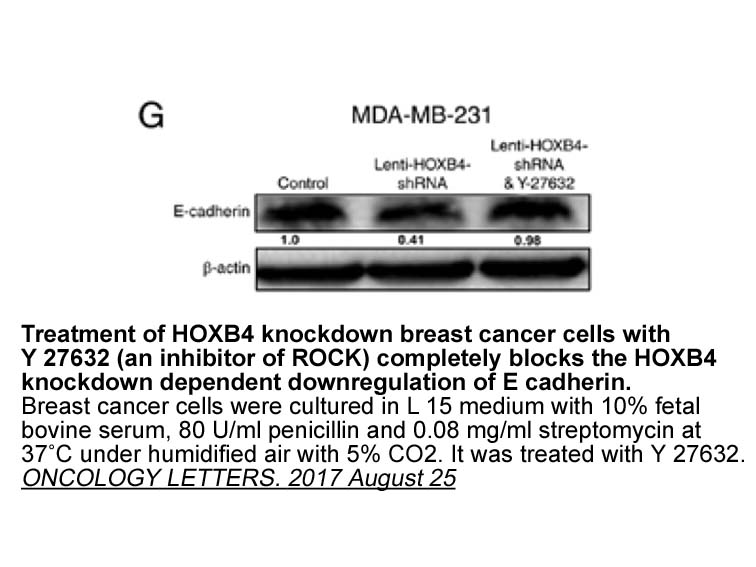Archives
Findings are relevant to both intervention targets
Findings are relevant to both intervention targets (e.g., personalized medicine) and intervention mechanisms. For example, an emerging literature suggests that targeted interventions remediating attentional vigilance (‘ABM’ procedures) have a broad impact on clinical anxiety symptoms (Hakamata et al., 2010). However, initial support for this ALW-II-41-27 approach has recently been called into question as studies emerge showing limited clinical benefit (Cristea et al., 2015). Our study suggests that inconsistent findings are not due to lack of a mechanistic link between attentional vigilance and real-world symptomatology; rather, more robust methods for modifying attentional patterns may be needed (MacLeod and Clarke, 2015). Furthermore, the present findings could help to clarify the mechanism by which ABM works. Reduced vigilance and improved prefrontal regulation of threat responses may translate into reduced real-world avoidance, enabling exposure to feared stimuli and resultant habituation processes to occur, a key mechanism in gold-standard, cognitive-behavioral treatments for anxiety (Foa and Kozak, 1986). Future ABM studies would benefit from inclusion of EMA measures throughout the course of treatment to allow for time-course analysis of critical intervention mechanisms.
Introduction
Autism spectrum disorder (ASD) is a neurodevelopmental disorder characterized by qualitative impairments in social interaction as well as restricted, repetitive behaviors (RRBs). RRBs are the core symptoms of ASD, and are diagnostic of autism, according to the Diagnostic and Statistical Manual for Mental Disorders-Fourth Edition (American Psychiatric Association, 2000). Based on the Diagnostic and Statistical Manual of Mental Disorder-5 (American Psychiatric Association, 2013), RRBs remain the key diagnostic criteria. The category of RRBs is very broad, and includes such behaviors as motor stereotypies (e.g., turns in circles), repetitive use of parts of objects (e.g., buttons on clothes), adherence to nonfunctional routines (e.g., insists on taking certain routes/paths), and compulsive behavior (e.g., need for things to be even or symmetrical).
Increasing evidence  suggests that RRBs first emerge in toddlers and preschoolers, even as early as 8 months of age in children later diagnosed with ASD (Watson et al., 2007; Kim and Lord, 2010). The wide variety of repetitive behaviors also occur in typically developing (TD) young children, including intellectual disability, obsessive compulsive disorder (OCD), Parkinson\'s disease, and Tourette syndrome (TS) (Evans et al., 1997; Boyer and Liénard, 2006). However, difficulties in classification and quantification complicate systematic research of repetitive behavior in distinct neuropsychiatric disorders (Langen et al., 2011). Several studies have found increased RRBs in both adults and young children even as young as 18–24 months of age with ASD compared with developmentally delayed (DD) controls (Richler et al., 2007; Morgan et al., 2008).
Previous structural magnetic resonance imaging (MRI) of individuals with clinical disorders investigating neuroanatomical correlates of repetitive
suggests that RRBs first emerge in toddlers and preschoolers, even as early as 8 months of age in children later diagnosed with ASD (Watson et al., 2007; Kim and Lord, 2010). The wide variety of repetitive behaviors also occur in typically developing (TD) young children, including intellectual disability, obsessive compulsive disorder (OCD), Parkinson\'s disease, and Tourette syndrome (TS) (Evans et al., 1997; Boyer and Liénard, 2006). However, difficulties in classification and quantification complicate systematic research of repetitive behavior in distinct neuropsychiatric disorders (Langen et al., 2011). Several studies have found increased RRBs in both adults and young children even as young as 18–24 months of age with ASD compared with developmentally delayed (DD) controls (Richler et al., 2007; Morgan et al., 2008).
Previous structural magnetic resonance imaging (MRI) of individuals with clinical disorders investigating neuroanatomical correlates of repetitive behavior has suggested changes in basal ganglia, particularly caudate and putamen. For example, results of imaging studies with medication-naive TS patients, have indicated reductions in caudate and putamen volumes (Bloch et al., 2005) although increases (Fredericksen et al., 2002) and similar volumes (Zimmerman et al., 2000) have also been reported. In addition, smaller caudate nucleus volume in children predicted increased severity of TS symptoms in adulthood (Bloch et al., 2005; Hyde et al., 1995). In terms of OCD, Radua and Mataix-Cols (2009) conducted a voxel-wise meta-analysis using 12 MRI studies, which showed increased gray matter volume in basal ganglia, including putamen and caudate nucleus. This analysis also indicated a correlation between OCD severity and increased magnitude of basal ganglia volume.
behavior has suggested changes in basal ganglia, particularly caudate and putamen. For example, results of imaging studies with medication-naive TS patients, have indicated reductions in caudate and putamen volumes (Bloch et al., 2005) although increases (Fredericksen et al., 2002) and similar volumes (Zimmerman et al., 2000) have also been reported. In addition, smaller caudate nucleus volume in children predicted increased severity of TS symptoms in adulthood (Bloch et al., 2005; Hyde et al., 1995). In terms of OCD, Radua and Mataix-Cols (2009) conducted a voxel-wise meta-analysis using 12 MRI studies, which showed increased gray matter volume in basal ganglia, including putamen and caudate nucleus. This analysis also indicated a correlation between OCD severity and increased magnitude of basal ganglia volume.